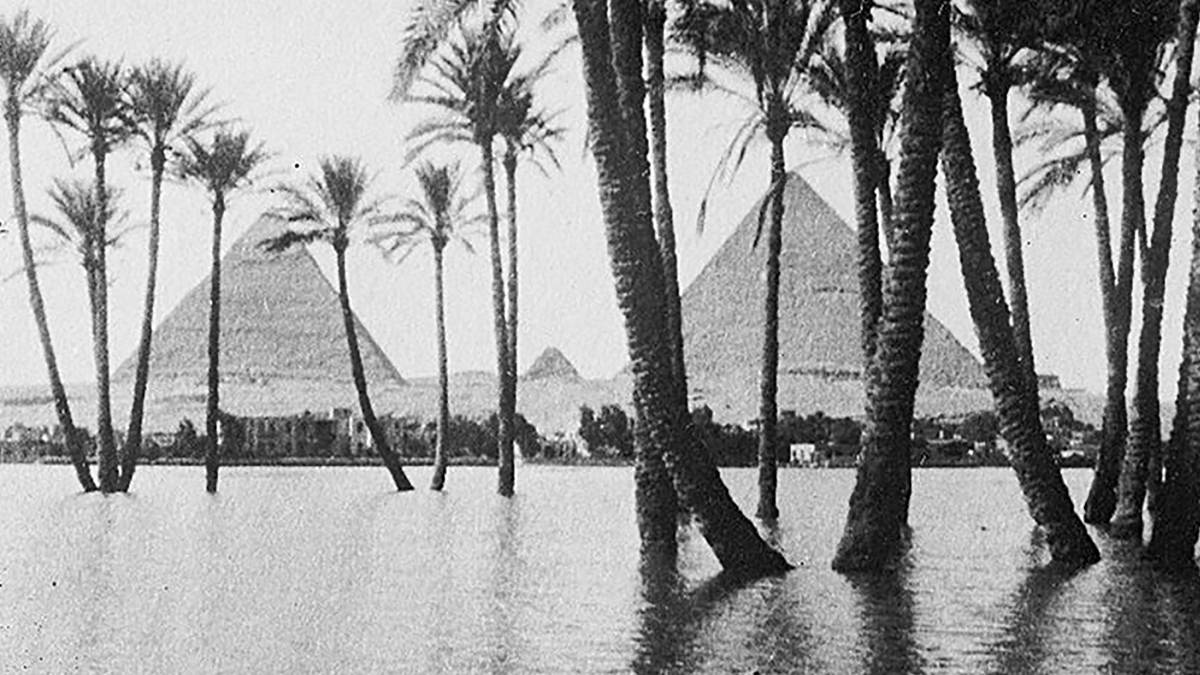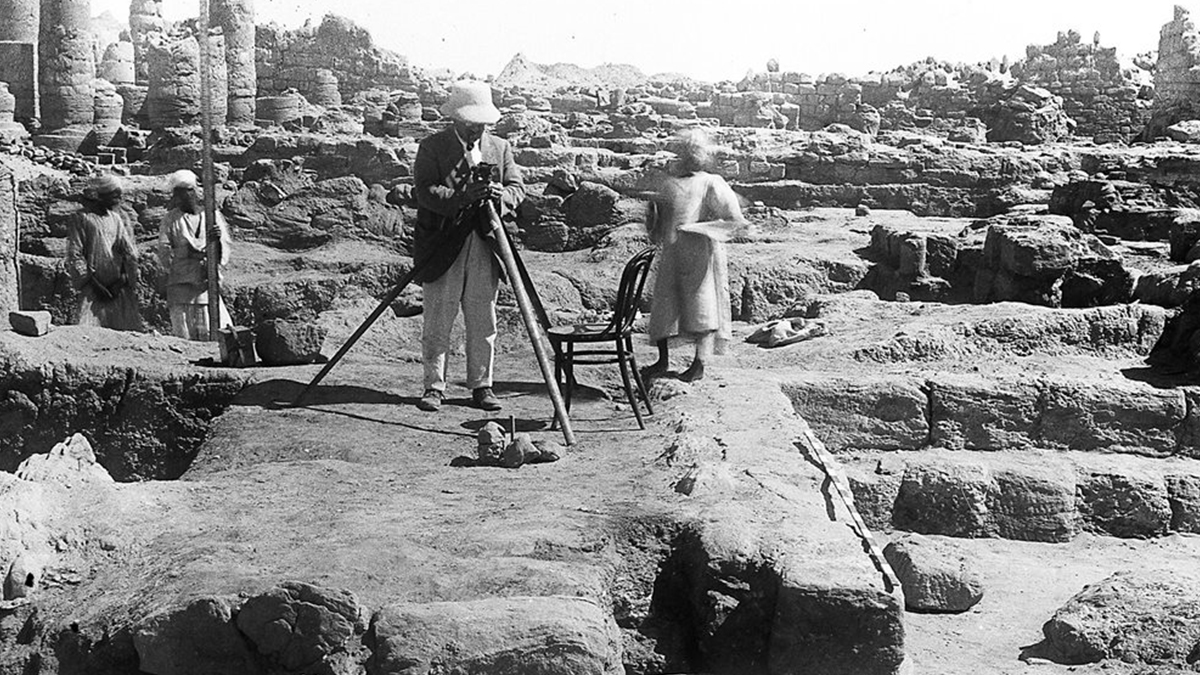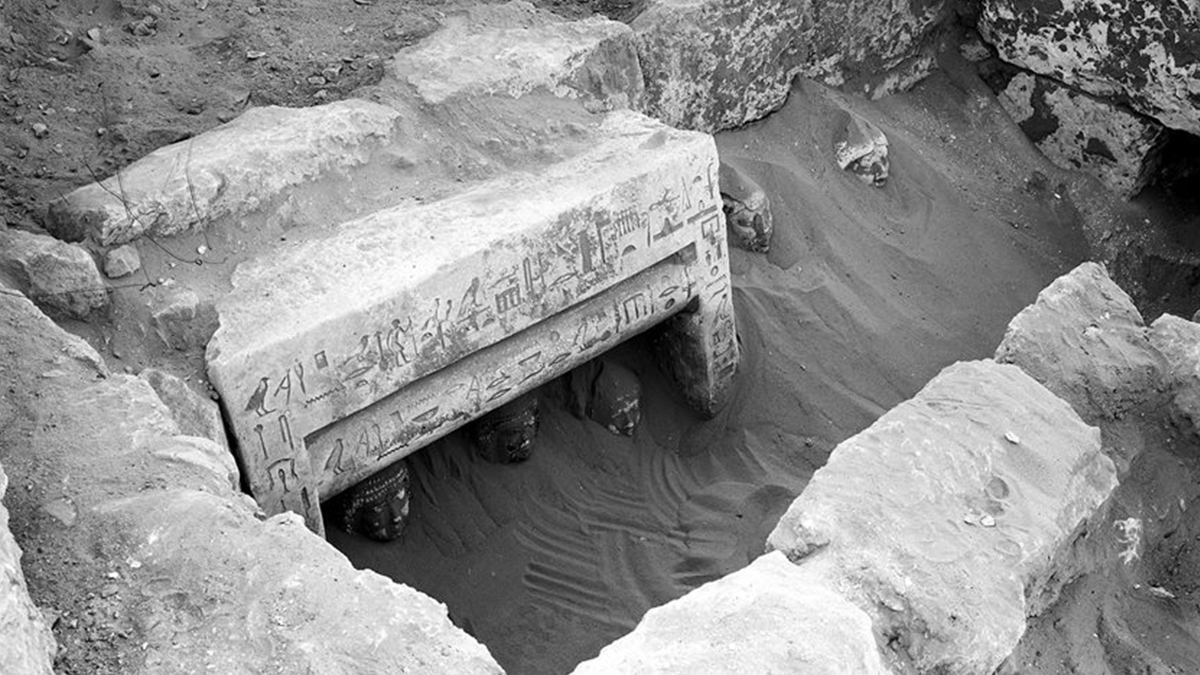A deep dive in Egyptology
Egyptology’s eloquent eye… A historical flashback on archeological photography

Global October 07, 2021 - By
An Egyptian granodiorite statue of a seated woman emerged from the desert sands of a Nubian excavation site in Kerma, unearthed—methodically—according to new scientific approaches espoused by early-20th-century US archeologist George Reisner. It was December of 1913, and at each stage of uncovering the meter-high statue, one man used a camera to capture artful, beautifully toned images, each on its own glass negative.
Behind the lens was Mohammedani Ibrahim, one of the first Egyptian-born archeological photographers and one of the most skilled. Ibrahim’s photos of the statue identifed as depicting Lady Sennuwy of Asyut, wife of Djefaihapi of Asyut, and dated to the 12th dynasty of Egypt’s Middle Kingdom between 1971 and 1926 BCE, were later shipped with the statue to the Museum of Fine Arts, Boston. Ever since, Ibrahim’s photos of Lady Sennuwy’s statue have been among his most viewed. While others were displayed in the museum or published in Reisner’s academic papers, most were deposited in the museum’s archives together with Reisner’s records. The only reason anyone knows Ibrahim’s name, despite leaving behind more than 9,000 photographs, is thanks largely to Reisner. Ibrahim, who spent more than 30 years documenting fragments of bygone eras of his homeland, has remained nonetheless almost as obscure as the long-ago architects, masons, sculptors and painters whose works he recorded on film.
But how did one of the first Egyptian archeology photographers working with Reisner, later hailed as one of the founders of scientific archeology and the father of American archeology—in large part because of his use of photography to track his decades of work, primarily in Giza—become a nearly invisible historical footnote?
Reisner wrote Ibrahim’s name on every print, but cropping in publication often left the matter of credit—or not—to editors
“There’s no pure process of writing history out there,” says Christina Riggs, who specializes in the history of archeological photography at Durham University in the UK. “These stories develop, but a lot of the people involved disappear out of the story even when they’re on the page and in the photos.” Riggs continues, “Nothing is produced—no knowledge, no collection, no field—without being a part of a historical moment.”
Ibrahim’s and Reisner’s moment was bound up in the history of Egypt. The country had been grappled over by foreign powers since Roman days in the first century CE. Although Egypt remained a de jure province of the Ottoman Empire until the after World War I, Ottoman influence in the region had been waning for more than a century as European powers vied for influence—and artifacts. Napoleon’s French army came first, in 1798, bringing with it a contingent of scientific savants who, in addition to producing the monumental survey Description de l’Égypte, filched more than a few artifacts, including the Rosetta Stone, which the British later stole from them. Then there were the British, uneasy about an Egyptian nationalist movement, who invaded in 1882. The camera, meanwhile, invented as the metal-plate daguerreotype in 1839, had already been deployed to capture many of the country’s monuments.
While the object of most early photography in Egypt was the recording of legacies left in stone, there was little interest living civilization of the day. Many early photos of Egypt are landscapes deliberately devoid of humans.
“Modern Egyptians were almost never in the photos, and that was no accident,” says Pomona University professor of art history Kathleen Howe, who specializes in how photography has shaped Western views of Egyptian culture. “It was a lot easier to take things from a people who just were not really there. The native Egyptians just didn’t count. They were seen as mere cogs in the machine, even as they pulled tourists up and down the Nile and worked alongside the famed white, male archeologists that were setting up shop there.”





